Packing Light
In British Columbia’s South Okanagan Valley, suitcase wines tell the story of heritage winemaking and immigrant experience.
Packing Light
In British Columbia’s South Okanagan Valley, suitcase wines tell the story of heritage winemaking and immigrant experience.
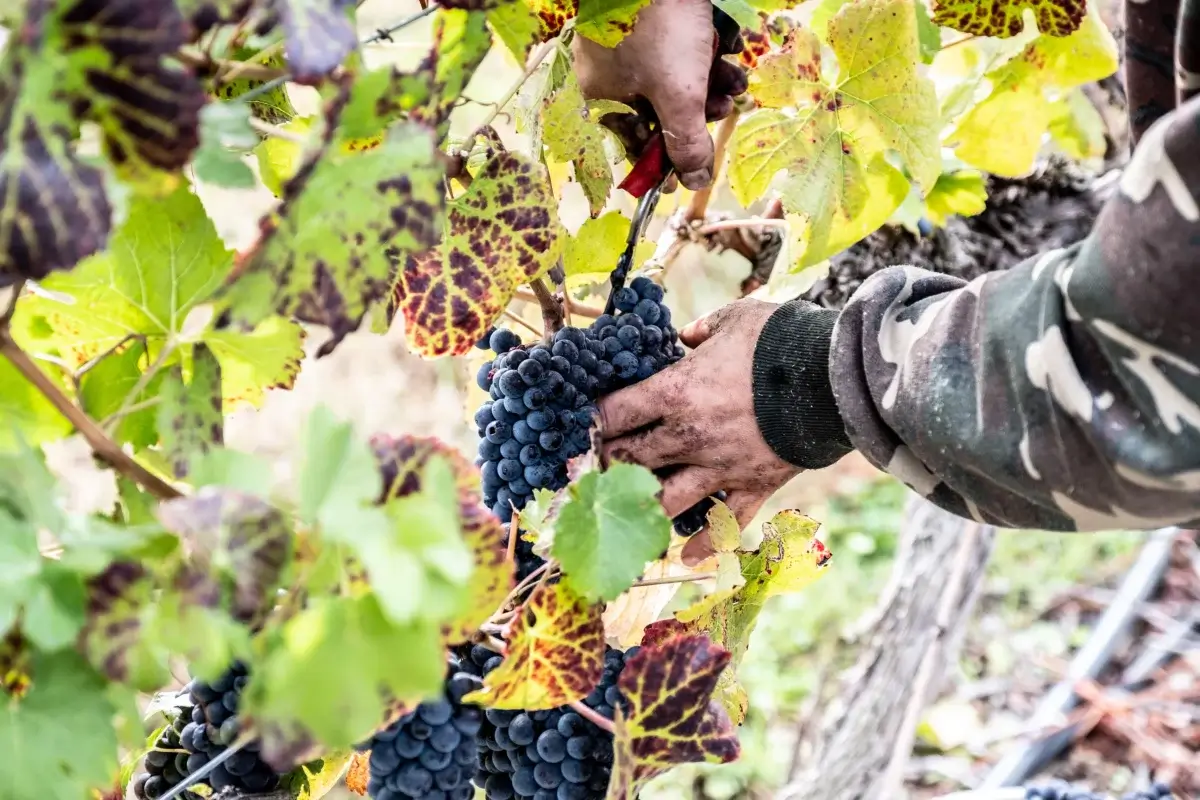
Oliver Osoyoos Wine Countryby Leila Kwok
Have you heard the tale about the midnight heist in Burgundy, where the thief clipped some pinot noir vines and smuggled them back to California in a Samsonite? In British Columbia, it’s more than an urban legend. It’s all true—the locals call the fruits of that caper the suitcase wines.
They represent some of the oldest wines in North America, as the vines arrived in Italian immigrant Joe Busnardo’s suitcase in the late 1960s. Busnardo planted those Pinot Blanc and Trebbiano vines at Hester Creek Winery, and those vines are still producing fruit today.
According to Kimberley Pylatuk, public relations coordinator at Hester Creek Estate Winery, Busnardo went through official channels. He grew up on a farm in Italy’s Veneto region; when he came to the Okanagan Valley in 1967, he saw a landscape that looked like home. He wanted to bring 10,000 vines, but the federal and provincial governments said no. They allowed him to import two cuttings of 26 separate varietals in 1968. Adding to the red tape, the government quarantined the vines before they released them. Luckily for Busnardo (and his cuttings), he was patient.
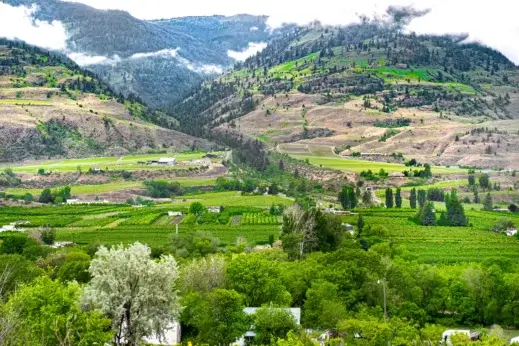
By 1972, he had more than 120 different varietals planted on the property, all Vitis Vinifera, and long before the BC government offered grape growers $8,100 an acre to pull out the Labrusca grapes and plant vinifera—a move credited with changing the tide of the wine industry in the region.
“We consider British Columbia a new wine region. But when you look at the people that live here, there are French winemakers, Australians. People bring their knowledge, their legacies and their traditions growing grapes and making wine,” says Pylatuk. “People like Joe back in the 1960s started that. He knew how to make good wine, how to grow grapes and how to pick the right vineyard property. We look at the ancient Romans who knew to plant their vines on a hillside because of cooler drainage, and look at the spot Joe chose—it speaks to ancient traditional knowledge.”
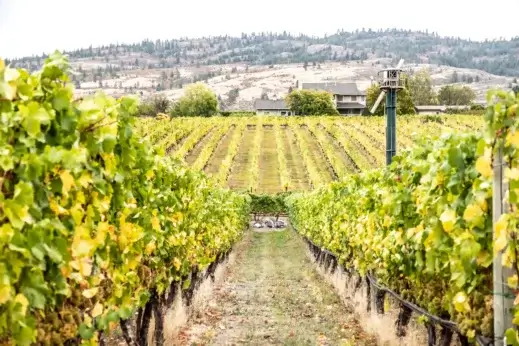
Busnardo sold the property in 1996 and winemakers have puzzled over where some of his vine originated since then. “We call block 13 Joe’s block. We know they came from Northern Italy, but we don’t know exactly what they are. We sent them to UC Davis and McGill University on more than one occasion and they’ve come back inconclusive,” says Pylatuk.
A few months ago, Hester Creek’s winemaker made the trek over to Vancouver Island to ask 90-year-old Busnardo directly. His response? “I’m taking that to my grave.”
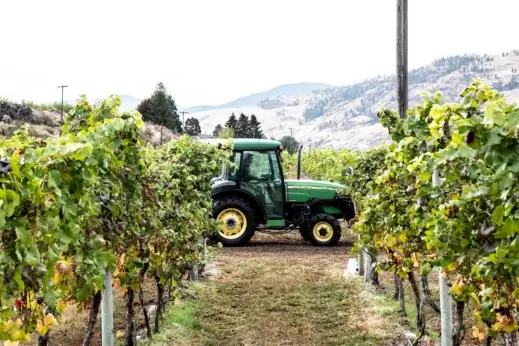
“Forty years ago, the original owners of Road 13 [Golden Mile Cellars then] identified their site as akin to what they had at home in Europe and probably thought, who’s going to check my suitcase for a couple of plants? Let’s take it back to the Okanagan Valley and see if it grows,” says Jennifer Busmann, executive director of Oliver Osoyoos Wine Country.
Lest you think Busnardo was the only vine smuggler to arrive on BC’s shores, rest assured other folks have gotten around customs laws as well. According to Alfredo Jop, assistant guest experiences manager at Road 13 Vineyards, the Serwo family brought German vines carefully wrapped in a damp towel in their luggage when they moved from Germany (where they grew grapes) to Canada in the late 1960s. There are also Chenin Blanc vines around the region that can be traced to other suitcases and intrepid travellers.
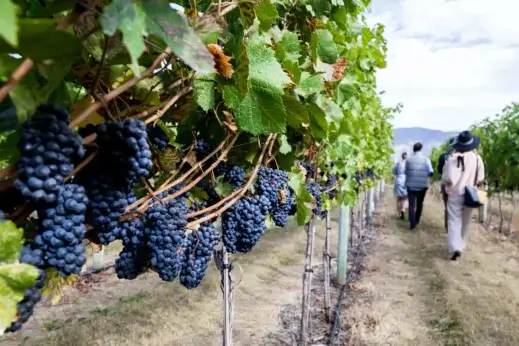
The variability in growing seasons and diverse micro-climates of the Okanagan Valley allow many varietals from around the globe to flourish. As a result, many of the 200-plus wineries in the region have similar luggage lore. Okanagan winemaking is not just a story of pioneering farming practices but of immigrants journeying to new homes with a piece of their heritage tucked into their luggage.
Visionary immigrants like Busnardo and the Serwo family may not have understood what they were starting at the time, but they planted the seed that grew into a wine region that produces half of British Columbia’s award-winning wines across almost 50 wineries. Busmann adds, “I believe that vision from those growers and winery owners set us on our path.”
Follow us
This work is licensed under a Creative Commons Attribution-NoDerivatives 4.0 International License.
Want to republish a Modern Farmer story?
We are happy for Modern Farmer stories to be shared, and encourage you to republish our articles for your audience. When doing so, we ask that you follow these guidelines:
Please credit us and our writers
For the author byline, please use “Author Name, Modern Farmer.” At the top of our stories, if on the web, please include this text and link: “This story was originally published by Modern Farmer.”
Please make sure to include a link back to either our home page or the article URL.
At the bottom of the story, please include the following text:
“Modern Farmer is a nonprofit initiative dedicated to raising awareness and catalyzing action at the intersection of food, agriculture, and society. Read more at <link>Modern Farmer</link>.”
Use our widget
We’d like to be able to track our stories, so we ask that if you republish our content, you do so using our widget (located on the left hand side of the article). The HTML code has a built-in tracker that tells us the data and domain where the story was published, as well as view counts.
Check the image requirements
It’s your responsibility to confirm you're licensed to republish images in our articles. Some images, such as those from commercial providers, don't allow their images to be republished without permission or payment. Copyright terms are generally listed in the image caption and attribution. You are welcome to omit our images or substitute with your own. Charts and interactive graphics follow the same rules.
Don’t change too much. Or, ask us first.
Articles must be republished in their entirety. It’s okay to change references to time (“today” to “yesterday”) or location (“Iowa City, IA” to “here”). But please keep everything else the same.
If you feel strongly that a more material edit needs to be made, get in touch with us at [email protected]. We’re happy to discuss it with the original author, but we must have prior approval for changes before publication.
Special cases
Extracts. You may run the first few lines or paragraphs of the article and then say: “Read the full article at Modern Farmer” with a link back to the original article.
Quotes. You may quote authors provided you include a link back to the article URL.
Translations. These require writer approval. To inquire about translation of a Modern Farmer article, contact us at [email protected]
Signed consent / copyright release forms. These are not required, provided you are following these guidelines.
Print. Articles can be republished in print under these same rules, with the exception that you do not need to include the links.
Tag us
When sharing the story on social media, please tag us using the following: - Twitter (@ModFarm) - Facebook (@ModernFarmerMedia) - Instagram (@modfarm)
Use our content respectfully
Modern Farmer is a nonprofit and as such we share our content for free and in good faith in order to reach new audiences. Respectfully,
No selling ads against our stories. It’s okay to put our stories on pages with ads.
Don’t republish our material wholesale, or automatically; you need to select stories to be republished individually.
You have no rights to sell, license, syndicate, or otherwise represent yourself as the authorized owner of our material to any third parties. This means that you cannot actively publish or submit our work for syndication to third party platforms or apps like Apple News or Google News. We understand that publishers cannot fully control when certain third parties automatically summarize or crawl content from publishers’ own sites.
Keep in touch
We want to hear from you if you love Modern Farmer content, have a collaboration idea, or anything else to share. As a nonprofit outlet, we work in service of our community and are always open to comments, feedback, and ideas. Contact us at [email protected].by Carrie Honaker, Modern Farmer
July 1, 2024
Modern Farmer Weekly
Solutions Hub
Innovations, ideas and inspiration. Actionable solutions for a resilient food system.
ExploreExplore other topics
Share With Us
We want to hear from Modern Farmer readers who have thoughtful commentary, actionable solutions, or helpful ideas to share.
SubmitNecessary cookies are absolutely essential for the website to function properly. This category only includes cookies that ensures basic functionalities and security features of the website. These cookies do not store any personal information.
Any cookies that may not be particularly necessary for the website to function and are used specifically to collect user personal data via analytics, ads, other embedded contents are termed as non-necessary cookies.
A well-written and informative read.